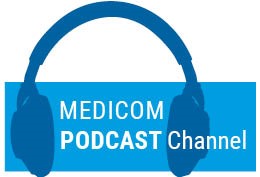The NTT system was created at the San Bortolo Hospital in Vincenza, Italy, to manage both treatment-related toxicities and cancer-related symptoms in adult patients receiving cancer treatment.
The lead investigator of the observational study, Lorenzo Calvetti, MD, said proper management of chronic diseases is crucial to curb the rapidly increasing costs of health care and to improve patient quality of life.
“The integration of triage pathway protocols and early palliative care help prevent unnecessary emergency room visits and hospitalizations,” Dr. Calvetti said.
The trial design involved the training of oncology nurses for a period of 4 weeks. This included formal lessons for 8 hours, telephone triage, and teaching by a medical oncologist on duty for 2 weeks. The management of patients was centralized and standardized across the institution, which was a key design innovation of the trial. NTT operated Monday to Friday from 8 AM to 8 PM to serve patients who were referred to NTT to address their treatment-related adverse effects (TRAEs).
Adult patients with cancer on active treatment were referred to the NTT from September 2018 to September 2019. TRAEs were registered in clinical records, and actions were taken based on a Common Terminology Criteria for Adverse Events (CTCAE) grade that corresponded with the severity of the symptoms. Grade 3/4 cases were immediately referred to the medical oncologist on duty.
During the study period, 1,075 patients received systemic treatment compared with 936 in the equivalent time frame the previous year. NTT provided 429 consultations; 581 TRAEs were reported, and 117 patients reported more than one. The most common TRAE reported was fever during chemotherapy (38 events [33.6%]), which resulted in a febrile neutropenia in seven cases. Other common TRAEs included gastrointestinal symptoms, pain, fever (unrelated to chemotherapy), and fatigue.
The primary endpoint was to compare the rate of hospitalization of patients on treatment during the study period and the same time frame the previous year. The results showed 109 patients with cancer were hospitalized during the NTT study period compared to 138 the previous year, resulting in a normalized hospitalization rate of 10.1% versus 14.7% (p = 0.002). This represented a cost savings of €380,160.
Dr. Calvetti noted that special care should be taken for patients with lung cancer based on the complexity of their symptoms during the study and frequency of the interventions reported.
Discussant Robert M. Daly, MD, MBA, of Memorial Sloan Kettering Cancer Center, said the study raises interesting questions. “Calvetti et al. found that patients with lung cancer were most frequent callers (22.4%) and represented only 12% of patients in the study,” he said.
Dr. Daly noted the lack of a rigorous cost effectiveness analysis in the study. “We need to better understand how much these interventions cost and the value they bring,” he said.
Such an analysis is critical, he added, as similar programs seek to expand and scale during uncertain economic times, such as now during the COVID-19 pandemic, and questions remain on how to improve the technology.
“How can we better customize the technology based on the individual patient’s risk and modulate the intensity of monitoring based on that patient’s risk?” he said.
- Calvetti L, et al. ASCO Virtual Meeting, 29-31 May 2020, Abstract 2002.
Posted on


